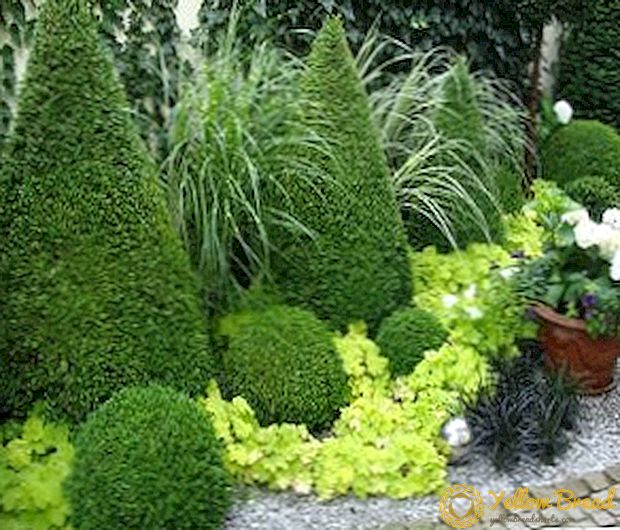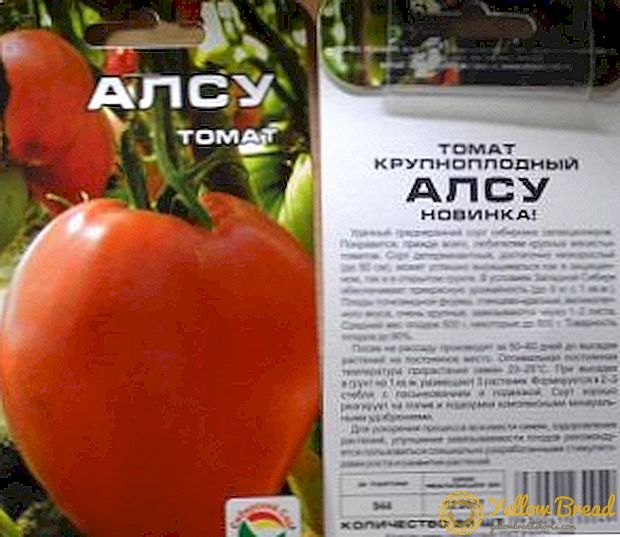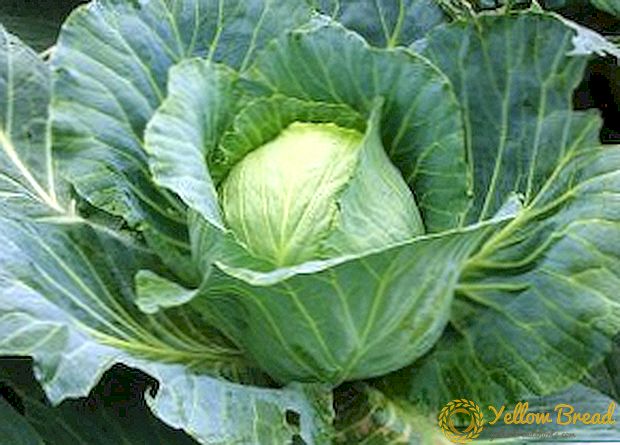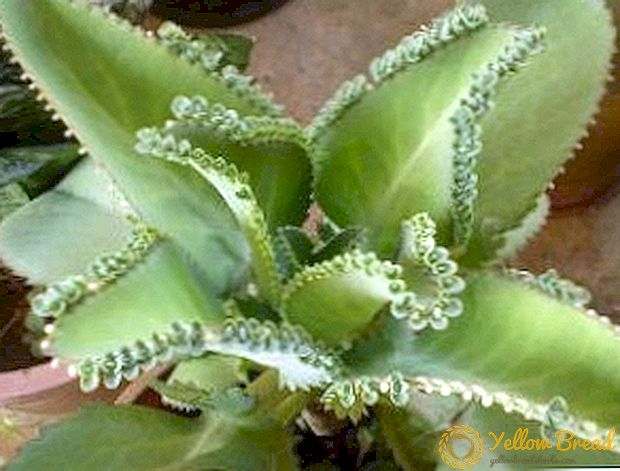 In August, the peak of ripening of vegetables begins, and hostesses rush to provide the family with delicious marinades and pickles for the winter. They exchange with each other new interesting and proven old recipes. This year, a neighbor shared with me a recipe for pickled pickles and brought last year's jar of bright multi-colored pickled vegetables for the sample. The whole garden seemed to fit in this jar — tomatoes, cucumbers, apples, onions, zucchini, garlic, sweet and bitter peppers, squash (all vegetables were tiny). After trying, I certainly decided to please my family with such a winter billet. I want to share with you the recipe of pickled pickles.
In August, the peak of ripening of vegetables begins, and hostesses rush to provide the family with delicious marinades and pickles for the winter. They exchange with each other new interesting and proven old recipes. This year, a neighbor shared with me a recipe for pickled pickles and brought last year's jar of bright multi-colored pickled vegetables for the sample. The whole garden seemed to fit in this jar — tomatoes, cucumbers, apples, onions, zucchini, garlic, sweet and bitter peppers, squash (all vegetables were tiny). After trying, I certainly decided to please my family with such a winter billet. I want to share with you the recipe of pickled pickles.
- What is pickles?
- Required Ingredients
- Kitchen appliances and utensils
- Features of product selection
- Step-by-step recipe with photos
- Vegetable preparation
- Bookmark in banks
- Pour boiling water
- Warming up
- Cook marinade
- Fill and sterilize
- Storage and useful tips
What is pickles?
Not every hostess knows what pickles are, many for some reason think that pickles and gherkins are one and the same. In fact, behind the overseas word "pickles" ("pickles") there are hidden small pickled vegetables: cucumber babies, baby tomatoes, baby carrot crumbs and baby onions.
American cooks always add pickles to the cooked sandwiches and hamburgers as a finishing touch, for which these pickled vegetables in the USA received the title of "bread and butter pickles". Pickles are used not only in sandwiches, but also as a separate snack for liquor or as a side dish to meat, and are very popular in the United States and the UK. 
Required Ingredients
The following layouts of vegetables and spices are enough to close the 4 liter cans of pickles. The layout is given approximately, since all the vegetables are of different sizes. I still have unused ingredients for another liter jar.But it's not scary, just need to cook another portion of the marinade and make another jar of pickles. 
Vegetables need:
- 20-30 pieces of cucumbers (gherkins);
- 20-30 pieces of tomatoes (cherry);
- one head of white cauliflower;
- 15 small carrots (long index finger);
- three handfuls of young white onions (diameter of the head 2-3 cm);
- 10 pieces. black peppercorns and 20 coriander kernels.
Kitchen appliances and utensils
In addition to vegetables and spices for the preparation of pickles, we need:
- a large pan (three-liter) for warming some vegetables in boiling water before pickling;
- another large tank (3-5 liters) to boil water;
- oven;
- four thick yellow lids for preservation (white lids can also be taken, but experience shows that yellow tolerates the damp air of the cellar better) or twist-off lids;
- four liter jars;
- sealing key for canning (if you have regular tin cans);
- kitchen gloves or a pair of linen towels (so as not to burn yourself on hot surfaces);
- A sharp knife for cutting and cleaning vegetables.
Features of product selection
To make it happen, the hostess needs to specifically pick the vegetables in size. They take cucumbers no more pinky.Choosing tomatoes, it is best to take varieties of cherry, especially since now there is a large selection of such tomatoes with different color of the skin (yellow, red, pink, brown, yellow and red stripes). 
It is difficult to find a tiny carrot, but there is a way out - you can buy a couple of bunches of young carrots from the grandmothers on the market and cut each along into 4 pieces. Cauliflower can be taken not only white (prescription), but also purple. When laying in the jar, the layers of cabbage will alternate by color, and it will turn out very elegant.
Step-by-step recipe with photos
To prepare pickled pickles, you need to follow the recipe exactly: from the preliminary preparation of vegetable ingredients for canning to the preparation of the marinade strictly according to the recipe.
Fruits are pruned, root crops are cleaned and cauliflower is disassembled.Carrots and cauliflowers need pre-heating to become softer. Banks for canning must be sterilized with hot steam or in an oven.
Vegetable preparation
If the hostess was unable to buy all the ingredients or vegetables of the right size indicated in the recipe - no problem. In pickling pickles, the most important thing is the pickle recipe, and the ingredients can be changed at their discretion (put something more, put something at all).

Root vegetables, larger in size than necessary, can be cut into rings or pieces. The main thing is that all components (sliced and whole) should be approximately the same size. The prepared pickles are laid out in separate containers, from which they will then be recruited (separate cucumbers, separate onions).
We begin the preliminary training:
- all vegetables are well washed in several waters;
- root crops are cleared from the skins;
- onions are peeled;
- cut off tomatoes with a tomato brush, to which they are attached;
- carrots and cauliflower are boiled a little;
- cucumbers are cut off on both sides of the "ass".
Some vegetables and root crops, due to their density and hardness, need additional heating in boiling water. This cooking technique is called blanching. In our case, products such as cauliflower and carrots need blanching.
Before blanching, the cauliflower must be disassembled into small florets. If the carrot is somewhat larger than necessary, then it must be cut lengthwise into four parts (or into thick rings). Blanch cauliflower and carrot separately in boiling water.

To do this, they are immersed in boiling water for 5 minutes, then fished out of boiling water with a kitchen colander. With the further layout of the pickles in layers in cans - these partially boiled cauliflowers and carrots are also used. All ingredients are laid out on 5 piles, approximately the same size. This is done so that the hostess does not forget to put anything in the bank.
Bookmark in banks
In the banks washed with soda, the vegetables are laid in layers. When layers are laid, it is desirable to make them contrast. For example, after a layer of inflorescences of white cauliflower, you should lay a layer of red cherry tomatoes or bright orange carrots, the next layer is laid of light vegetables (onions, garlic or zucchini).
Such contrast layers are stacked to the very top of the tank - this will give an elegant look of conservation.

Pour boiling water
When tanks are filled to the top, they are poured boiling water. Banks are filled with boiling water very carefully, 1/3 of the entire tank is immediately poured, after 30 seconds the rest boiling water is slowly added. These precautions are necessary so that the glass does not crack from sudden changes in temperature. Hot liquid should reach the neck of the container.
Warming up
After that, the cans are covered with a metal lid for preservation and put in the oven for 15 minutes.The oven must be preheated at +100 ° C. This is to ensure that all the ingredients are warmed up well.
After warming up, pour the hot water from the cans into the saucepan. Banks with heated vegetables are placed at the time of cooking the marinade in the oven or wrapped in a warm towel. This will prevent them from cooling down.
Cook marinade
When the vegetables are laid out in banks, it remains to cook the marinade. We measure by means of the liter capacity the hot water merged from cans. We set its quantity, and taking into account this data, we prepare the marinade.

The marinade recipe for pickled pickles (for 1 liter of water):
- add 40 g of salt and 40 g of sugar to the water, 10 pcs. black peppercorns and 20 coriander seeds;
- while stirring, bring the contents of the pan to a boil and boil on low heat for two minutes until the sugar and salt are completely dissolved;
- 50 g of vinegar (9%) are poured into the low-boiling marinade and the pan is tightly covered with a lid (you can take both apple and wine vinegar);
- quickly bring the marinade with vinegar to a boil (so that the vinegar does not evaporate).
Fill and sterilize
We proceed to the final stage:
Filled with herbs, spices and vegetables, poured hot marinade jars are set on a baking tray in the oven. The neck of each jar is covered with a metal lid for preservation (without rolling it up), this will not allow the marinade to boil during the sterilization process.

The baking tray is gently placed in the oven to sterilize the pickles. The oven timer is set to a temperature of +200 ° C. The jars must be sterilized until a chain of bubbles begins to rise from the bottom to the neck. This is a sign that the marinade begins to boil in a jar. After that, the pickles are sterilized for another 20 minutes at the same temperature.After 20 minutes, turn off the oven and take out the cans with pickles.
Banks of vegetables are taken out of the oven and rolled up with the help of a canister key. If you have special cans for preservation with a neck suitable for twist-off lids (with threads), then these lids are closed manually. For this you need to tightly wrap the lid on the neck of the jar until it stops.

Pickle jars are left at room temperature until cool.The next day, labels with the date of manufacture are glued to the jars with marinades and transferred to storage in the basement or storeroom.
Storage and useful tips
Each experienced housewife, reading this recipe, will definitely notice that the process of cooking pickles is very similar to our traditional canning of vegetables for the winter.
But in pickling pickles there is A few nuances to consider in order to achieve a good result:
- In the marinade for pickles you need to add (to the taste of the hostess) herbs, mustard seeds, various peppers, turmeric, and nutmeg.
- Vegetables must be small! If during pickling there are no vegetables up to 5 cm in size, they can be cut into pieces of the same size.
- Pikuli can be prepared in mono-composition and assorted. That is, you can marinate only small cucumbers or tomatoes.
- For the preparation of pickles, it is not necessary to take only vegetables or root vegetables, berries and fruits (grapes, apples, pears, plums, etc.) are quite suitable.
- All vegetables, fruits or root vegetables that are poorly amenable to short-term treatment with boiling water, must be blanched.
- For pickles, you can take not only wine vinegar, but also any natural (rice, apple).
- You can store ready-made pickles for 1-2 years in a dark, cool basement or other suitable room.

Pickled pickles will be ready to eat no earlier than in a month. Only after this period the vegetables will marinate well and acquire the characteristic taste of these products.
I hope, now it has become a little clearer what pickles are, and this recipe is useful for hostesses in order to pamper the family in the winter period with very tasty, unusual pickled crumbs-vegetables.
It is not necessary to strictly follow the specified list of vegetables, the hostess can add any other vegetables at her discretion. These can be: green peas and grains of corn, young pods of asparagus beans, beans, eggplants and squash - all that tells you the culinary imagination. The most important thing in preparing pickled pickles is marinade. Dare, dream, and preparations tasty to you!






